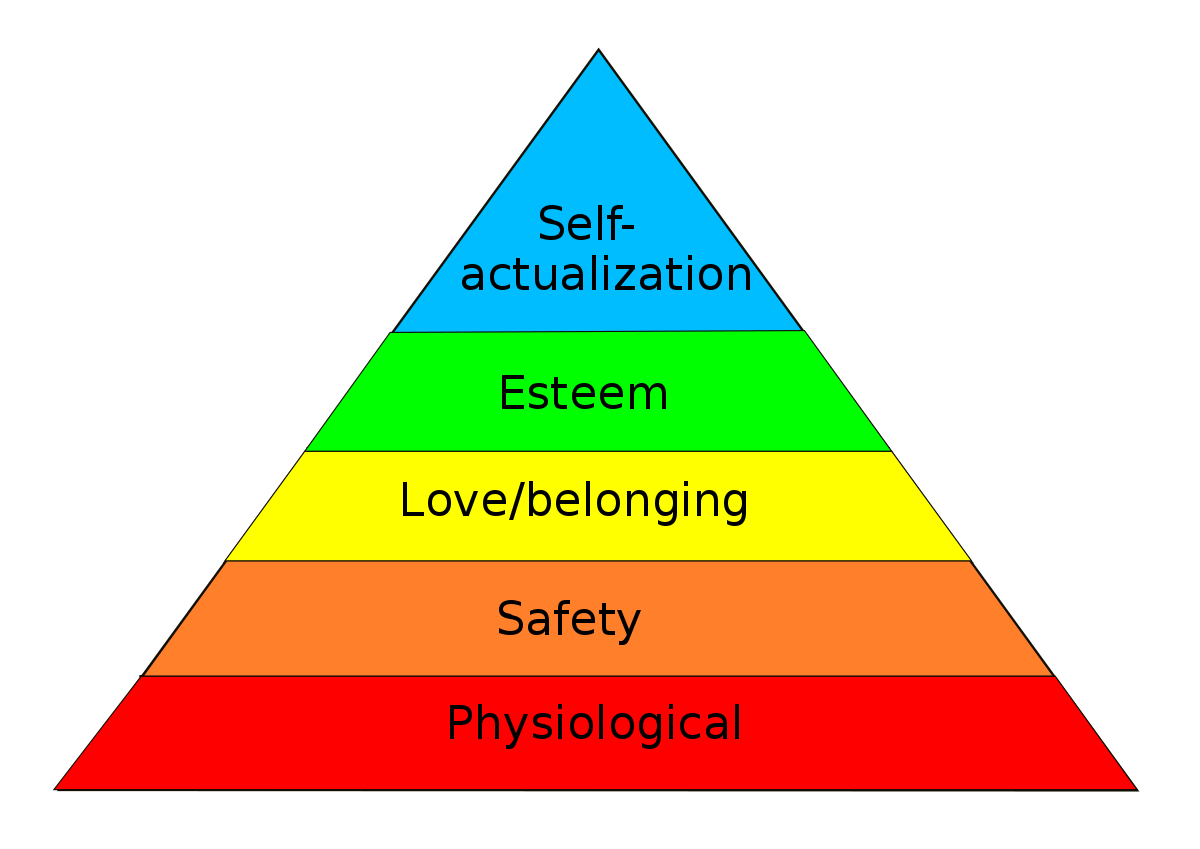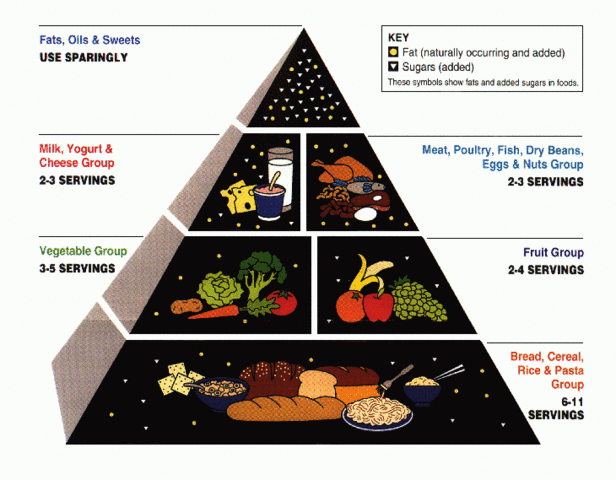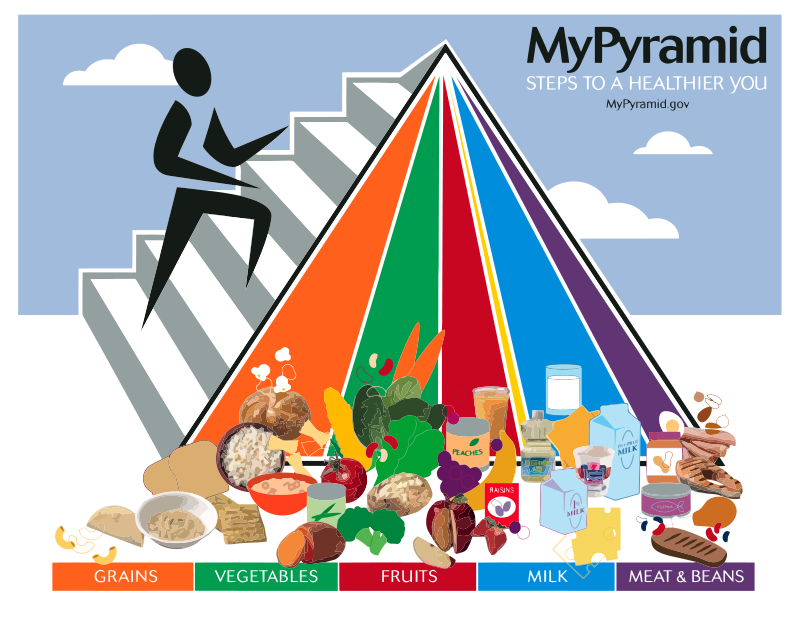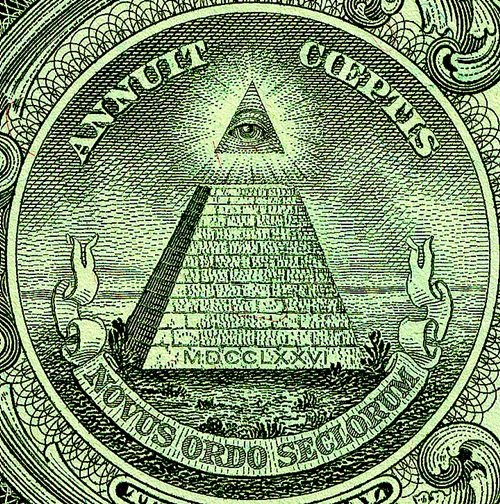The Magic of Pyramids

Ever have a week that has it’s own theme? Last week was pyramid week for me. It seemed that everywhere I looked, a pyramid appeared.
Pyramids are iconic and symbolic and like all symbols they contain the magic to create thoughts and ideas. For this reason, historically, symbols appeared to have strange powers. For instance, runes, the protolinquistic script of the Germanic tribes were sacred and thought to be filled with sorcerous power because they provoked ideation. To early humans struggling with abstraction in a real world, symbols took on mythic significance. Today we believe we have we've evolved beyond that, but aren't these letters and words in front of you also symbols that mysteriously convey thoughts from one person to another?
We haven't really evolved at all. Humans still struggle to recognize the difference between abstraction and reality. I have a Christian friend who swears that the Pepsi symbol is Satanic, that it has the power to cast evil spells. Considering that seeing a Pepsi symbol might trigger a thirst response and entice you to consume an unhealthful liquid that is little more than water, sugar and chemicals, he might be on to something.
The Mayans were consummate pyramid builders and a recent discovery using laser technology to visually strip away the mantle of jungle surrounding Tikal, a Mayan ruin in the lowlands of Guatemala, revealed a megalopolis as vast and complex and paranoid as any ancient Old World city. The LiDAR (laser radar) photos revealed at least 60,000 man made structures including hidden pyramids, roads, building platforms, moats, walls and ramparts that surround this vanished Amerindian kingdom.
The Mayan elites loved pyramids. Not only were they monuments to the rulers who claimed to be descendants of the gods, they made nice viewing platforms to get above the flatness of the Yucatan, survey the domain and spy on the astronomical gods to see when they might threaten the world with an eclipse or a comet and somehow turn it to their advantage.
Because pyramids are iconic symbols of rule in both the old and the new world and are part of our history, the evidence of past civilizations not unlike our own, we associate them with authority. In other words, subconsciously, a pyramid conveys credibility.
My next pyramid encounter was Maslow's hierarchical pyramid of human needs as presented in a post by @lifenbeauty which inspired me to author my own.

I recall Maslow's pyramid from Psychology 101. It appears to have almost universal acceptance within that academic discipline. I remember arguing its validity with the professor and, to shut me up, him eventually admitting that it was a generalization, a mere guideline to gauge human needs and not necessarily an accurate road map. I find these sorts of "guidelines" a bit dangerous since once they are in place, those who assimilate them do so without questioning their validity, which goes against the purest form of scientific inquiry, that of consummate scrutiny.
Psychology is not an exact science since human interactions constantly shift, consciousness evolves and perceptions change. Human foibles must always be viewed in context.
Freud, the founder of psychology, believed that all men had sexual fantasies about their mothers. We now know that isn't necessarily true. Freud lived during sexually repressed Victorian times when a woman who flashed an ankle was considered a hussy. He probably harbored mommie issues himself and, rising to a position of authority, projected them onto the rest of humanity. Imagine what he would think of today's butt floss bikini?
Maslow lived and died within the 20th century. He was the son of Russian Jewish immigrants and thus was at least aware of the tribulations of his tribe, his parent's life and perhaps also believed in the overburden of deity. Like Freud, his perceptions are thus colored by his experience and environment.
Maslow formulated the base of his pyramid through observation of laboratory monkeys. It seems logical that if you can't breathe, are dying of thirst, are starving to death are too cold or too hot you might be motivated to fulfill those needs before striving for anything else. In life, life itself must come first. But above that I seriously doubt that much hierarchy exists, that people pursue any and all abstract human needs in random order, or pursue none of them beyond the basics of life.
Self actualization can even become the prime motivator. In the past, sages have sought personal actualization by starving themselves, living as mendicants, self-flagellation, while teetering on the edge of dissolution through personal deprivation. Admittedly, that would be the extreme, but it shows that people cannot be pigeonholed into this structure and doing so generates general assumptions that aren't necessarily true.
Maslow places great emphasis on safety, his second tier. Maslow was probably a bit paranoid. Also, his pyramid exhibits purely Western values, though, near the end of his life he was still revising it to include more ethereal aspects. Through his studies he had evolved and had achieved quite a bit of personal self-actualization.
If you do an image search of Maslow's pyramid the results will astonish you. It's like a Christmas tree upon which various psychologists hang their own particular ornamentation. To some self-actualization equates with ego gratification. To others, reproduction is part of the base. Many use the pyramid as an excuse to indulge in profligate accumulation behavior claiming it to be "human nature."
I admire Maslow and the work he did. His assessment of self-actualization, though controversial, may be his greatest achievement. My problem is that now there is this symbol loaded pyramid that the less enlightened willfully use as a road map and means of control, in essence saying that people are mapped and predictable and therefore controllable, especially if we can convince them that the pyramid is a valid assessment of human motivation. Maslow's pyramid is a form of mind control, of self-fulfilling programming.
Let's compare Maslow's pyramid to another pyramid: the United States Department of Agriculture food pyramid.
Abe Lincoln founded the USDA to promote agricultural development in the United States. In other words, the production and marketing of food. It's first foray into nutritional guidelines didn't appear until 1894 and recommended a variety of foods like meat, fruits and vegetables. By 1916, with the ascent of scientific method and reductionism, drastically altered those guidelines to claim that fat, fatty foods, fruits, vegetables, sugars and sugary foods were all that were necessary for complete nutrition. This, of course, preceded the discovery of vitamins. My mother was raised under the umbrella of these nutritional guidelines. Most of her teeth were gone before she was 30.
In 1943 the USDA came out with 7 food groups. One group was butter and margarine. By 1956 this list shrank to the more familiar 4 food groups of meat, dairy, grains and fruits & vegetables. These are the foods most widely produced in the US. The four food groups nutritional guidelines lasted until 1991 when they came out with the food pyramid.
Enter the mesmerizing magic of the pyramid.

The first chart suggested to the USDA by nutritional experts in 1992 featured fruits and vegetables as the biggest group, not breads. This chart was overturned at the hand of special interests in the grain, meat, and dairy industries, all of which are heavily subsidized by the USDA. If Americans followed the chart suggested, they would buy much less meat, milk, and bread. On the other hand, if they ate as the revised chart suggested, it "could lead to an epidemic of obesity and diabetes," as original composer of the food Pyramid, Luise Light warned.
Wikipedia
Given the above statement and the number of o-beasts pounding the Earth, it becomes clear that the USDA is no more about proper nutrition than the FDA is about health or the DEA is about stemming drug use.
The USDA "My Pyramid" tries to blur this blatant propaganda with an almost unintelligible icon that includes something as non-nutritive as exercise.

In desperation, the USDA recently introduced "My Plate" which is the same four food groups arranged on a plate with fruits segregated from vegetables and a glass of dairy on the side. Same old, same old. Smoke and mirrors. Nice try guys!
Anybody who knows anything about food realizes that the USDA simply wants you to buy American food products and keep those subsidies rolling ever onward. They know nothing about nutrition, though they pretend to be the experts. When it comes to proper nutrition you're on your own.
The final pyramid in this week-long journey I noticed on the back of a US one dollar bill. If you're a yank, you know what I'm talking about. For the rest of you, here it is:

For some people, this triggers a conspiracy theory response: the eye within a triangle being a masonic symbol and the mark of the illuminati who rule the world. For others, and I think this probably relates to the Christian beliefs of the founding fathers, this is the eye of God, ever watchful over his chosen people: Americans.
For me it's the evil eye of Sauron, the surveillance state and the psychopaths who want to control it all, to elevate their own status to the top of the pyramid at the expense of the planet and all of its inhabitants.
But that's just me. My social programming didn't go so well when I was a kid.
What do you think about symbols and their ability to Trojan horse their way through the gates of your perceptions to trigger a programmed thought or emotional response? Are we being manipulated by symbols? Should we become that eye at the top of the pyramid, ever-watchful of our thoughts and our reactions to symbols to become more aware of how we are manipulated and lied to? Should this be part of our overall awakening process? Does it even matter?
First image is mine: Partially excavated Zapotec pyramid in Oaxaca, Mexico.
Have you read Umberto Eco's "Foucault's Pendulum"? Your article reminds me on it. It's worth reading.
Maslow's pyramid I had in school during my first education. It was boring to death and nobody actually paid real attention. We students just copied it from the blackboard and I only got in touch with it later on when I was studying the Universal Basic Income.
I am happy to hear that Maslow himself did some progress in his life. Thank you for providing that information.
Alan Watts also stated that Psychology is more of an art than a science. Though I find some of the texts based on studies quite interesting and helpful. There are some changes within this field. I myself do rely on the systemic approach of therapy and often thought, that it's related to the Buddhist doctrine - the second order of cybernetics and the foundation of systemic family therapy is a relatively young profession and will have its after-effects in treating people psychologically. Altogether it is stated that human relations are by far to complex to explain them within the given linear frameworks the mainstream is still understanding psychology.
I suppose I do see conspiracies everywhere. It's easier that way, but, like generalizations they aren't always valid. Still, there are those who only exist to control, and any structure they could possibly use to do that is one I'm going to examine.
I'm often amazed, when flying over a city, how organized it seems, though I know that it is an organic growth, something that evolves and that there was no "conspiracy" to make it the way it appears at this moment. On the other hand, if I look at the intricacy of an integrated circuit board, it looks exactly like the city, but it isn't an organic trial and error product; it's something that was conspired, was planned down to the most minute detail long before it was built. If one single channel is incorrect the whole structure will not perform. In this way I believe that perhaps conspiracies that seem to be too complex to pull off, actually do exist.
I think Buddhism is the ultimate psychology. People (me included) get hung up on should be's and would be's but Buddhism teaches impermanence and the error of clinging as well as recognizing false identification.
Part of why I never gave much credence to Western psychology is its base in Western philosophy which assumes hierarchy to be a natural and normal part of human biology. It's focus is outward and deals with conditions that change and therefor must change with it. It is needlessly complex. I had already studied Eastern philosophy long before encountering Western psychology and so was not impressed by it and was, in fact, amazed at how unevolved it seemed.
You must have an interesting dilemma when dealing with your patients: your understanding of Buddhist principles up against your patient's immersion in delusional Western values that you must work with to bring them personal insight. That must take a lot of patience and compassion on your part.
Smile. Thousand "Lovies" for your humor.
For that I would have the question, what do you want to do with the knowledge about your investigation, after you are done with it? Or: do you ever get it done? ;-)
That could be, this is beyond my observation and interest. Birds build nests, other organisms build hills and other honeycombs or nets. The human form of architecture and locomotion goes far beyond the actual physical possibilities, and I am not sure if this is happening because of an unconscious conspiracy and whether there are countless other reasons that have nothing to do with it.
That's what I think, too. In any case, it seems to be much closer to Western philosophy and psychology than, for example, shamanism and the worldview of the still existing indigenous peoples in South America. Which I find also very interesting.
For me, there are criticisms and benefits to hierarchical structures. The benefits are obvious to me for historical reasons, as I know that there have hardly ever been any other main streams that were not hierarchically organized. You would have to explore the anthropological or ethnological field a little bit, like matrilinear peoples. Exactly these mother-centered clans are an example, but there is at least one kind of hierarchy in which the mother is the head of the family without being oppressive. The decisions to be made in such a clan are consensus-oriented.
I think that hierarchies have become established because every military is structured like this and because there has hardly ever been a time in history without military conflicts. Hierarchies are passed on to us through a very old heritage and have become a habit. The benefit is always there because people without this hierarchy become disoriented. The family is the first form in which the hierarchy is lived. It can't be abolished. Instead, it is merely establishing a slow transformation towards another form of cohabitation. If that is possible at all. I don't know. It is also not very practical to force it. That would be a hierarchical attempt :-)
HaHa! Yes, indeed. But it works surprisingly well in cooperation with people. Buddhism is astonishingly simple in its practical application. It is only in theory that the teaching is very complex, but in daily use, in direct physical contact with people, it contains a simplicity that is very beautiful, precisely because of its simplicity. As a rule, I can reach people much faster who are not so brainy. I'd say my quote is about seven to three. Seven people are immediately accessible while three are not. Average.
Those I can't reach, of course, are causing me the most headaches. I try not to blame them and stay tuned. In times, it is hard for me. But well, I am only human and no Bodhisattwa.
I hope I could give a perspective and information you do not already know about. ;-)
In this post I tell about how my parents lied to me about Santa Claus. It seems absurd, but ever since that time I haven't trusted authority. I always think I'm being lied to. In my 20s I became aware that something was wrong with the world, that it was dying and being buried under man-made junk for no apparent reason and so I began to investigate why this was so. I first realized that it wasn't just the times I was living in that were problematic, that my parents were also subject to propaganda and lived their lives like unknowing robots controlled by fashionable ideals.
Once the Internet went public and I had all this information at my fingertips I started tracing things backwards. The decimation of Turtle Island didn't get rolling until the railroads began criss-crossing the country. That started around the time of the American Civil War at the hands of industrial puppet, Abraham Lincoln. The late 1800 also saw the absurdity of corporations being granted the rights of flesh and blood citizens, another effect of the railroads and industrialization.
But I soon realized that mankind's descent began long before that. Western civilization's values descend from Semitic tribal culture via the Talmud and the Bible. This includes Islam and Christianity as cults of Semitism. The Vedic Scriptures of the East are Indoeuropean in origin, taken to India when the Aryans conquered that continent. China developed on it's own hierarchies but those who crossed over to turtle Island brought the shamanic beliefs of eastern Siberia with them, a belief in all-pervading spirit and personal inclusion in the mystery of life. Their "fall from grace" was imposed from without by the invaders. This is a vast generalization, but it served as a new platform from which to investigate.
What, I wondered, made man think that somehow he was special, exceptional and here to manipulate the environment to suit his desires at the expense of all other things including his fellow humans? False religion, to be sure, but religion grows out of self-image. What made man think he was apart from it all instead of part of it all? It was agriculture, the simple act of planting seeds.
This is the "fall from grace" talked about in the bible. Man became manipulator instead of beneficiary. I've already written about this in my Slacker's Guide, so I won't continue here.
I suppose I have answered this question to my own satisfaction but I feel that it is important that people understand the significance of this event and its ramifications, to look at the roots of their delusions, to gain insight into their motivations and therefore allow them to consciously alter them instead of reacting to them.
That is why I write, why I continue to find this thread and attempt to shed light on it. I realize that my endeavors are impotent, that even though we are racing towards the cliff that will end it all, nobody is much interested in taking their foot off of the gas pedal.
When I was in primary school, I heard from my history teacher that society of ancient Egypt can be shown as pyramid - slaves at the bottom, then soldiers, then priests and pharaoh at the very top (if I remember correctly). Lower classes were bigger and had to work for those above them (that scheme seems to endure tests of time much better than real pyramids). I think it can be useful for description of individual traits - we all know that anger (for example) can be powered by fear (n that case anger is a pharaoh - element that is easiest to spot, but there is something working underneath...that can be also caused by something that's even lower...). Hierarchy of needs...I agree that we shouldn't treat that like ultimate truth, but Maslow's pyramid can be useful - in most cases it's impossible to think about religion or art when you have empty stomach. It's true that some people sacrifice physiological needs for ''greater good'' but to do that, they first have to know basic satisfaction and decide to want something more - you won't turn a regular guy into saint by locking him up and not giving him food.
About symbols and their influence on us...I love conspiracy theories surrounding all-seeing eye. I don't know if it's all true, partially true or not true at all...but it's definitely interesting. Explain some things quite well...and help to make people suspicious of their government, which is always a good thing.
Thank you for your well reasoned response.
If you look closely, all civilizations are pyramids. Western civilization has the seeing-eye shadow government at the top, the political class, the military class and then the working classes that form the base.
Anger is the pro-active form of fear. They are two faces of the same emotion. Fear is incapacitating while anger is empowering. Governments walk this tightrope to keep the people in line. They instigate just enough fear to keep us supporting them but try not to push hard enough to make the people angry. Angry people revolt. Fearful people comply.
Maslow's pyramid might be a useful tool for children as they develop. They need the basics of survival, they need to feel secure and loved, they need to feel good about themselves and to seek higher aspirations, but once they are on their own, the pyramid often doesn't apply. It certainly doesn't apply to me. And sometimes when some of the needs aren't met, it motivates them to seek self-actualization. That is why some of the most famous and talented people arise out of the most unfortunate of childhoods.
I also love conspiracy theories, and don't discount any unless I've personally examined them. The term "conspiracy theory" is not unlike a symbol; it is designed to initiate a programmed response in the individual, that of discounting the validity of the issue in question. It is quite effective on the vast majority of the people who never question authority.
Symbols do have power, and until we all recognize that and can see what each symbol represents and what message it is trying to convey, that message can blast past our critical faculties and trigger an unconscious response. The price of freedom is eternal vigilance.
In Christianity, the "all-Seeing eye" is a non-canonical, though stable, image of Christian iconography. This symbol is also called "with its never-sleeping eye of the Lord." Represents the image of an eye in a triangle from which emanate rays. Eye in the triangle used as the emblem of the magic society of Aleister Crowley, Order of the Eastern Temple, the Masonic Lodge, Vietnamese Buddhists, Theosophists, Rosicrucians, etc., He is depicted on the Great seal of the USA and the dollar bill. His images quite often on the pectoral crosses, like the Orthodox, and other faiths, standing at the top of the cross (as if crowning it).
Thank you for this wonderful elaboration. Symbols do have mysterious and magical powers. They are liberally used.
@citizenzero sorry we missed the voting window on your article. How interesting that you found pyramids following you around.
When I took design studies we talked a lot about symbols and how they are interpreted by consumers but it all started with the pictograms which eventually evolved into letter and language. You're right that the alphabet is no more than 26 symbols that we learn to interpret in different combinations. I am sure you're aware of how only the elite and priedts were taught to read at one time and would share their abilities with lower classes by interpreting the written word. Priests would often convince their followers to leave all their worldly possessions to the church, instead of their families, when they died based on the written word. Even then the masses were being taught what to think instead of how to think. It seems not much has changed in the way of public education.
Perhaps, some people believe we are beyond symbols but colours, shapes, wording are all used to elicit a reaction, more often than not, to purchase something. People are just so conditioned to believe they are making their own choices that they rarely pick up on these cues. I will admit I am guilty too but working in marketing has definitely given me more awareness. Great article! -Aimee
Hence, the "word of God." Priests are a class that always knows how to maintain their positions of power, no? We call them politicians today.
I took an online copywriting course a few years back. They said marketing was based on the 7 deadly sins of avarice, lust, gluttony, sloth, greed, wrath, envy and pride. Cater to those weaknesses and people will buy. Symbols have the magic to bypass the mind and go directly to the emotions. Find the perfect word-symbol combination and success is at hand. Most people have no idea how programmed and vulnerable to this they are. Realizing that is part of the waking up process.
Me too. But thanks for the great, insightful comment. It's appreciated.
Huh, I never thought about marketing being based on the 7 deadly sins but that makes complete sense! So many light bulb moments.
I have said many times that my morals will be no doubt the reason I end my career in marketing. I try to choose clients who genuinely help others but sometimes other less-than-serving projects work their way onto my plate.
I am leaving our article upvote on your reply instead. Cheers! Aimee
Very Nice post kinda weird we both posted about the DOA at about the same time. My question is Where in the constitution is this power granted to the federal government lol.
If you examine American history, the civil war was a major turning point for federal power. Southern states were not allowed their autonomy and were forced back into the budding empire. Agricultural department was just part of that trend.